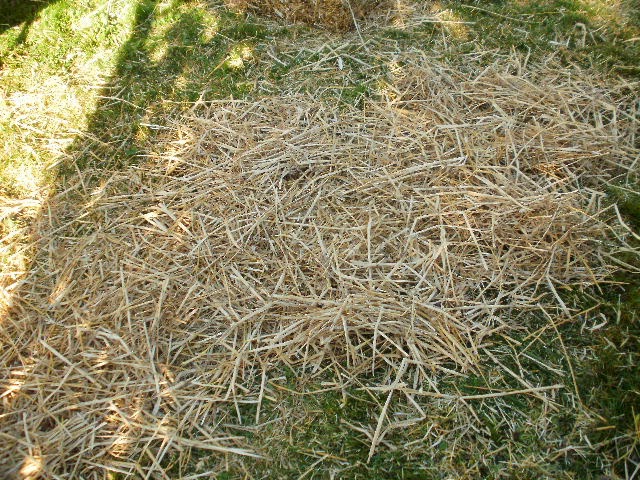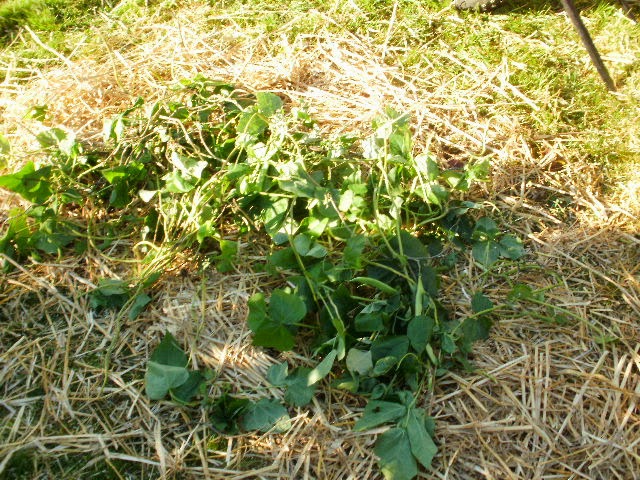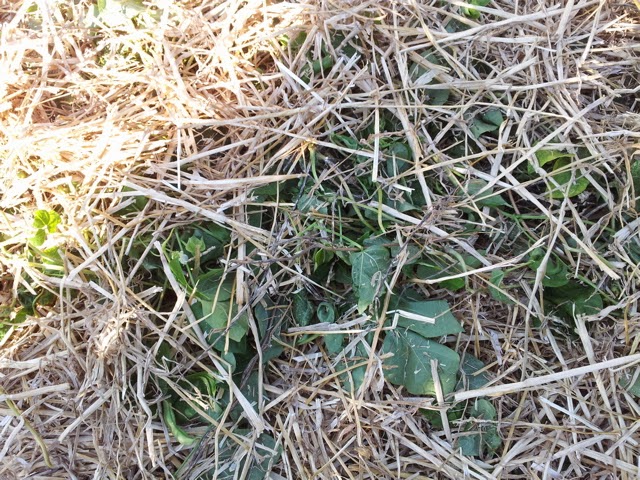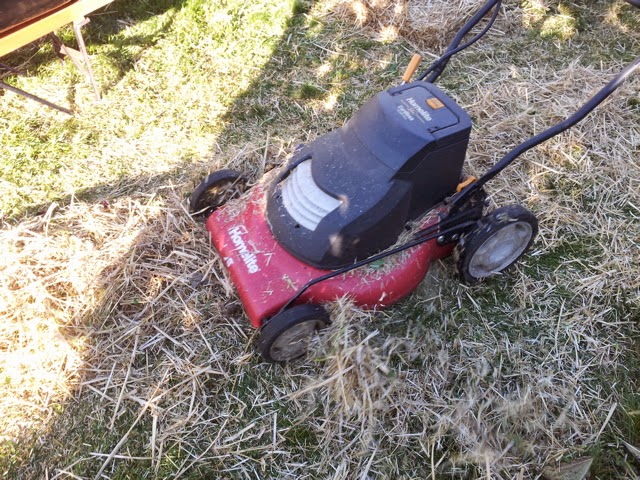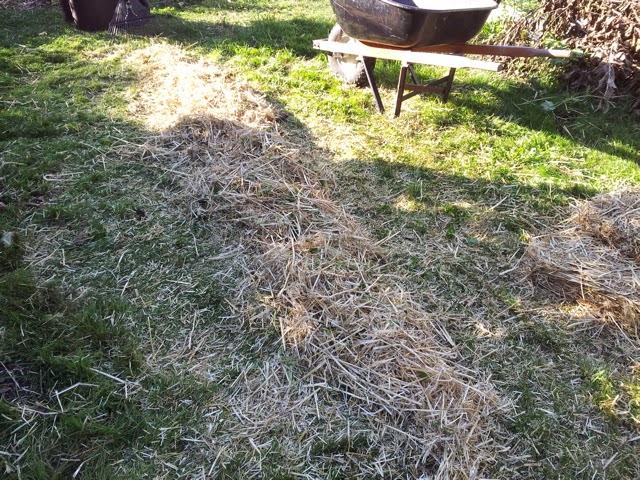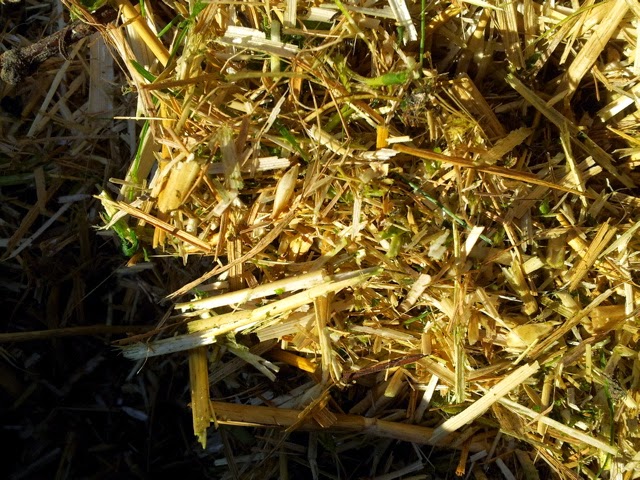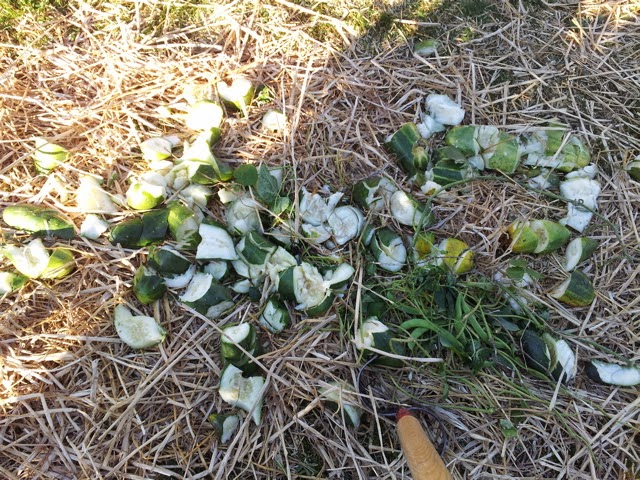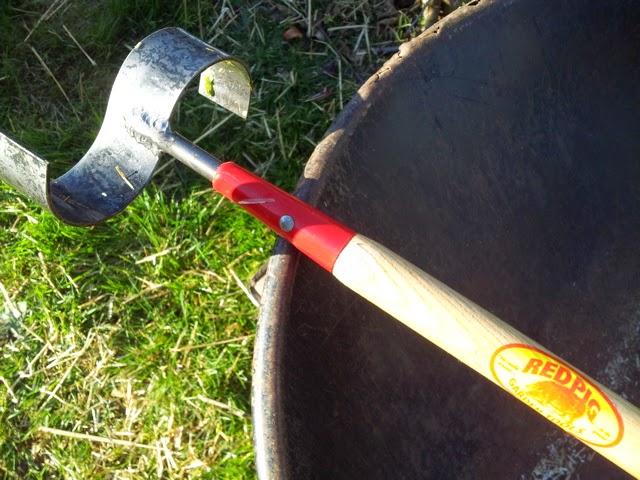| Online: | |
| Visits: | |
| Stories: |

| Story Views | |
| Now: | |
| Last Hour: | |
| Last 24 Hours: | |
| Total: | |
Compost Trick
I hit upon a great way to get my compost to break down faster.
Instead of waiting for the various compost constituents to break down from larger pieces to smaller, I figured I could help them along with the lawn mower. The contents of my last compost pile went into the bed at the back of the yard, along with the contents of the chicken yard. They are under warps for the duration until I can move the asparagus into them.
So I needed to start a new compost pile for the winter, which I determined should be in the first bed that I'm rehabbing. This summer I planted buckwheat into it, which I took down last weekend. Then from the big bed, I needed to take the pole beans and cucumbers down from their respective trellises and cut them up for the compost. But I didn't want to have to cut them up the hard way, and I didn't want to leave them whole; plus, I needed to add a lot of carbon to the pile, which I why I keep straw in the garage (I really need a barn, but then, I also need a truck and I'm not getting that anytime soon either). Using the mower with the bagger removed so that it would 'mulch' sounded like a good idea. Ideally, you want to end up with a C:N ratio of 30:1, but compost will work between 25:1-40:1*. You also want your compost to be damp, but also be fluffed up enough for air to pass through it. A compost pile with little to no air in it will decompose anaerobically, and trust me, it will smell bad. Having the straw chopped up into little bits goes a long way to keeping air in the pile. This is how i did it.
First I laid down a layer of straw:
Then I put the bean and cucumber plants on top of that:
Then I put a little more straw over that:
Then I had Steve run the mower back and forth over it:
Then I raked it into a row and had Steve run over it again:
This is what I got:
If it looks like a lot more straw than green stuff, that's because it is.
At one point, I added a bunch of old cucumbers:
And this is what I used to chop them up:
This is my mangel chopper, or fodder root chopper that I got from Red Pig Tools (I love my Red Pig tools- I have a bunch of them). It was a whole lot easier than attacking them with a machete, which I also have. Between the mower and the mangel chopper, I think I can retire the machete.
After chopping it all up and dumping it onto the new pile, I mixed in the buckwheat from the bed and some kitchen scraps, and then covered it loosely with a large sheet of plastic because it was going to rain the next day. A rainy day will cool down a compost pile and worse, leach nutrients. It's still a short pile, so I'm not expecting too much to happen right away. A compost pile doesn't really start cranking until it hits a critical mass, which starts at roughly a cubic yard. Some compost piles that are so large have been known to produce enough heat to spontaneously combust. This is the best explanation of how that can happen that I've seen. I never seem to have enough material on hand at any time, so I doubt that will ever be a problem.
Even if this pile is alway so small that it takes longer to break down than I want it to, at least I didn't have to chop it up with a machete, which is just plain taxing.
* See this for a great Carbon:Nitrogen calculator that will help you get your mix just right.
Source: http://weedingforgodot.blogspot.com/2014/10/compost-trick.html




